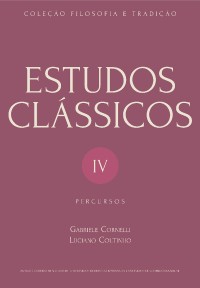Please use this identifier to cite or link to this item:
https://hdl.handle.net/10316.2/44293| Title: | Literatura neolatina e tradição ciceroniana: relações intertextuais entre a “Utopia” (1516) de Thomas Morus e “De finibus bonorum et malorum” (45 a.C.) de Marco Túlio Cícero | Other Titles: | Neo-latin literature and Ciceronian tradition: intertextual relations between “Utopia” (1516) de Thomas More and “De finibus bonorum et malorum” (45 a.C.) de Marcus Tullius Cicero | Authors: | Ribeiro, Ana Cláudia Romano | Keywords: | Utopia;Thomas More;De finibus bonorum et malorum;Cicero;intertextuality;Utopia;Thomas Morus;De finibus bonorum et malorum;Cícero;intertextualidade | Issue Date: | 2018 | Publisher: | Imprensa da Universidade de Coimbra | Journal: | http://hdl.handle.net/10316.2/44277 | Abstract: | Edward Surtz, in 1965, on the introduction of his edition of Utopia noticed that Cicero and Seneca are as important as Plato and Plutarch in the composition of this work. The presence of the last two authors in Utopia is generally more researched. The Roman philosophers mentioned are – in Surtz words – “the source for the tenets and arguments of the two schools discussed by Utopians, the Epicurean and the Stoic”. Namely, Surtz affirms that “Cicero’s De finibus is of special interest here, but detailed studies of Ciceronian and Senecan influences have still to be made”. Since the until now we have not found any studies relating Utopia and De finibus, so we have decided to start this analysis. Since poetry has been the object of the main part of intertextual studies involving Latin texts, we are aware of the difficulties to work intertextuality from prose. This work does a preliminary research on intertextual relations comparing some exerpts of both works. Em 1516, Thomas Morus publica sua Utopia. Em um estudo sobre as “fontes, paralelos e influências” do libelo moreano, Edward Surtz percebe a presença do legado clássico, filtrado pela visão de mundo cristã, pela interpretação dos humanistas italianos, pela tradição política inglesa, pelas diversas incidências do contato entre Velho e Novo Mundo na história do pensamento ocidental, pelo próprio trabalho literário do Morus escritor – e, poderíamos acrescentar, pelo trabalho interpretativo do Morus tradutor. Várias edições críticas apontam para a presença, na Utopia, de diversos temas abordados nas obras de Cícero. Em 1965, Surtz, na introdução da edição da Utopia que organizou juntamente com J. H. Hexter (The Yale edition of the Complete Works of St. Thomas More) notava que Platão e Plutarco são, na composição da Utopia, tão essenciais quanto Cícero e Sêneca, principais pontos de partida para a discussão das duas escolas filosóficas, a epicurista e a estoica. Surtz ressaltava ainda que o De finibus bonorum et malorum, de Cícero, seria uma referência importante para a elaboração dessa discussão. Neste trabalho, seguimos a pista de Surtz, mas ampliando-a para trechos que não tratam exclusivamente de filosofia. Tendo em mente as reflexões sobre análise intertextual de textos clássicos (Barchiesi e outros), cotejamos alguns trechos da Utopia e do De finibus, buscando relacioná-los a partir de sua forma linguística e/ou de seu conteúdo. |
URI: | https://hdl.handle.net/10316.2/44293 | ISBN: | 978-989-26-1584-4 (PDF) | DOI: | 10.14195/978-989-26-1585-1_15 | Rights: | open access |
| Appears in Collections: | Estudos Clássicos IV: percursos |
Files in This Item:
| File | Description | Size | Format | |
|---|---|---|---|---|
| literatura_neolatina_e_tradicao_ciceroniana.pdf | 614.08 kB | Adobe PDF |  |
Items in DSpace are protected by copyright, with all rights reserved, unless otherwise indicated.
